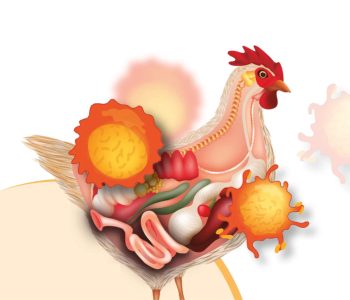Immunomodulatory and immunostimulating effects of beta-glucan
Nutritional immunology is a new science. It will be more effective when the relationship between nutrition and the immune system is better understood. That’s what we’re going to focus on in this review.
| Infectious diseases, possibly contagious in swine, avian, bovine, and other species, cause damage, corroborated by the reduction in the use of antibiotics, increasingly legislated. It increases the importance of the immune system. |
Currently, there is an intense scientific movement devoted to immune tissue, its development, and functioning, seeking more effective technologies, with resistance to antigens, and ultimately, more production.
The identification of dendritic cells, for example, occurred at this time, as well as some specifications of the B cell and some immunoglobulins.
These are the most commonly used categories of compounds:
Strictly speaking, benefits are sought or promoted, such as:
BETA-GLUCAN
Beta-glucan, notably in humans, has been studied in some pathologies such as
Let’s stick to dietary fiber. According to Rosch, C, dietary fiber is a carbohydrate polymer with three or more monomer units that do not undergo digestion.
For information regarding the fermentative characteristics, in vitro and in vivo of fibers in general, refer to the relevant bibliography.
THE IMMUNE SYSTEM
| Thus, resistance to an agent defines immunity. But what gives the immune system the ability and adaptability to mobilize a network of specialized cells and proteins to defend against infectious agents and altered cells?This is what we propose to discuss now. |
Thymus – T and B cells, macrophages and antigen-presenting cells (DCs or dendritic Cells);
Spleen – white pulp (T and B lymphocytes), the red pulp (erythrocytes);
Bone marrow – all lineages, including monocytes, macrophages, except T cells;
Lymph nodes – B and T cells, with B in the cortex and T in the medulla of the organ and macrophages. In pigs, B cells settle in the cortex and T cells in the medulla. It is the opposite of what happens in other animals and man;
Ileal Peyer’s patches – B cells;
Tonsils – T and B cells, macrophages, and DCs;
Fabricius bursa – mainly B cells.
Intestine
The intestine is the organ that most includes defense cells. Immune cells
(T and B lymphocytes) located in the mucosa differentiate and develop as they are stimulated by pathogens or foreign molecules.
Note (figure 2) that there are differences in the populations of immune cells in the different intestinal germinal centers.
Figure 2: Immune cells in the mucosa. Osman (2011)
